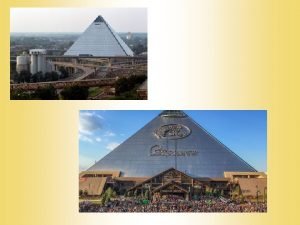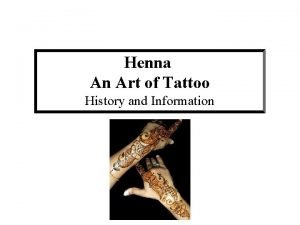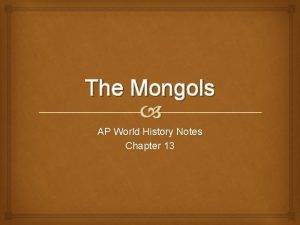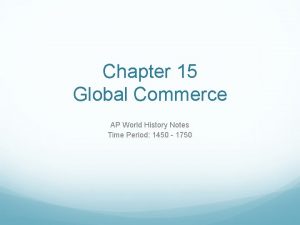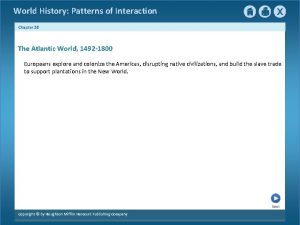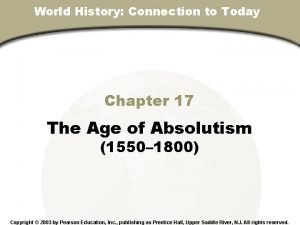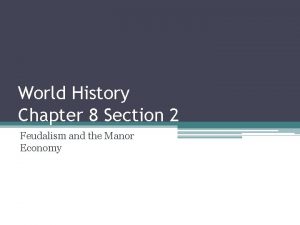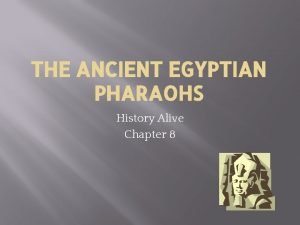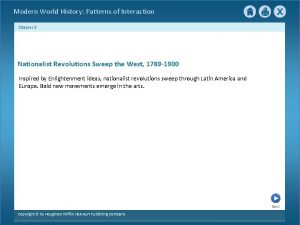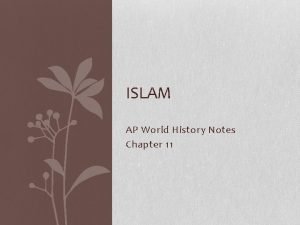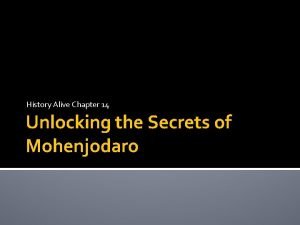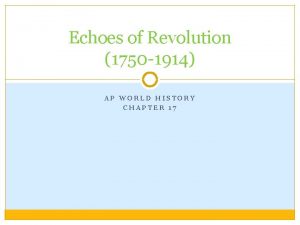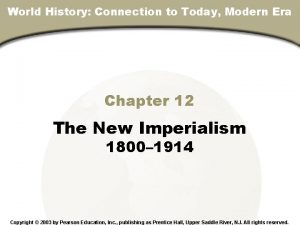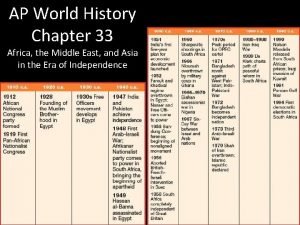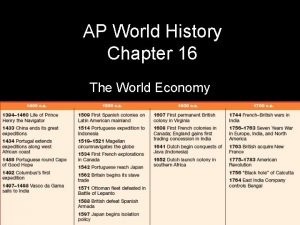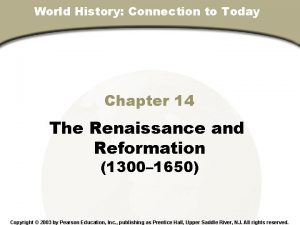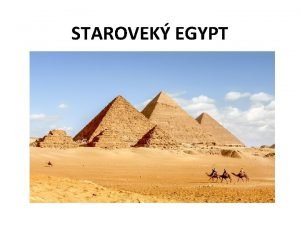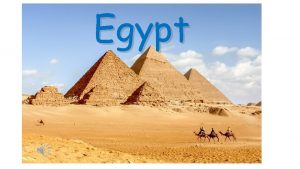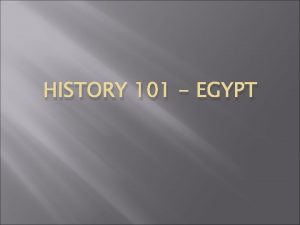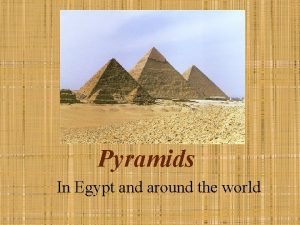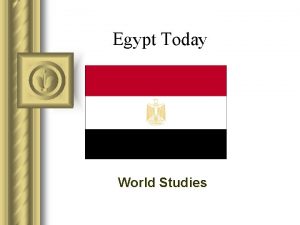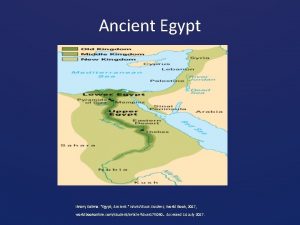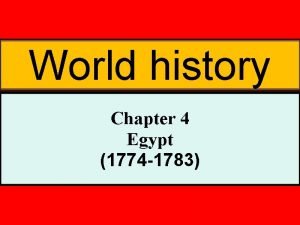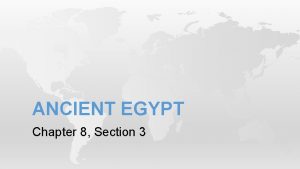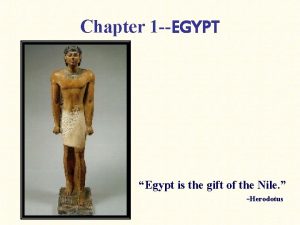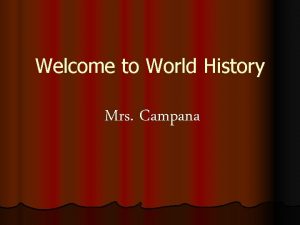World History Chapter 2 Di Gerlando Egypt Egypt































- Slides: 31

World History Chapter 2 Di. Gerlando

Egypt

Egypt Black Land (the fertile land) Red Land (the desert) Along the middle is the Nile River—the longest river in the world

The Nile rises out of central Africa, through Ethiopia and into Egypt. It flooded in the summer. It deposited layers of silt Southern Egypt is the Upper Egypt Northern Egypt is the Lower Egypt As it flows into the Mediterranean Sea, it forms a Delta.

The Kingdoms Historians have divided ancient Egypt into three Kingdoms. Old Kingdom (2700 – 2200 BC) Middle Kingdom (2050 – 1800 BC) New Kingdom (1550 – 1100 BC)

Pharaohs Leading the Egyptians were pharaohs. The Egyptians thought that the Pharaoh was a link to the afterworld. They had absolute power and owned everything

Pyramids They are located in Giza They were tombs— Egyptians believed in the afterlife. They were able to bring huge blocks of limestone without iron tools and wheeled vehicles.

Khufu He was probably born in the 26 th century in Egypt. Not much is known about him and its estimated that he might have ruled for at least 50 years. There is only a small segment that identified that this was his tomb

The Middle Kingdom A turbulent period—wars and political overthrow The Nile River was unpredictable The Hyksos’ invaded the Delta region. They brought their wheeled chariots

The New Kingdom By the Middle Kingdom— the Egyptian Empire reached the Middle East. They became powerful Most of the building that you’ve seen in ancient Egypt comes from this period

Hatshepsut Born probably around 1508 BC in Egypt She was the wife of Thutmose II and ruled somewhat jointly with him. She wore a beard as a sign of authroity

King Tutankhamen Born somewhere around 13540 BC. Began ruling as a young man—about 9 and 10 Died mysteriously— maybe injured or maybe poisoned. His tomb was found in 1922 by Howard Carter

Ramses II Born in 1303 BC Reigned from 1279 BC – 1213 BC. Known as the Great Builder and built many temples and monuments.

Egyptian Religion The chief god was Amon-Ra—the Sun god. Most Egyptians related to Osiris and Isis. Osiris was the god of the underworld and the Nile River

Belief in the Afterlife Egyptians were devoted in their afterlife They had to pass a test —their hearts would be weighed They relied on the Book of the Dead.

Mummification They thought that the afterlife was just like life They mummified the body by removing most of the internal organs and keeping them in canopic jars They filled up the body with spices and onions.

The Written Record Hieroglyphics—Greek for picture writing Was used for ceremonial and carved by priest. Demotic—a simpler form of writing and used for everyday. Written on papyrus

Rosetta Stone It is a slab of grandiorite stele Marked on it are hieroglyphics, demotic and ancient Greek Jean-François Champollion translates it in 1822

Mesopotamia The first civilization comes from the Fertile Crescent. Known as Mesopotamia— Greek for the Land Between the Two Rivers The Rivers were the Tigris and the Euphrates

Sumer Historians call Sumer the first civilization because they invented writing. They have first cities is around 3200 BC. Built out of bricks. Centered around trade

Cuneiform At around 3200 BC, the Sumerians invented writing. Their writing is called Cuneiform (Latin for wedge writing) Initially used for trade but eventually used for everything from government policy to letters to mom and dad.

The Frist Empire Sargon in 2300 BC was the ruler of Akkad. He invaded and defeated Sumer The Akkad Empire is the first empire in world history.

Babylon The first empire to put forward laws was Babylon. Ruled by Hammurabi around 1790 BC The Code of Hammurabi

The Code of Hammurabi It was 282 laws that were placed on a diorite Stele Shaped like a finger Today it sits in Louvre Museum

The Louvre Museum In Paris, France

The Code of Hammurabi Most of the laws dealt with Crime and Punishment. They focused on a criminal law and tried to curtailed violent crime. Another part of the Code involved Civil Law—taxes, marriage, slaves and property.

Assyrians vs. Persians Assyrians (1100 BC) was a very violent civilization that centered around war The Persians in 539 BC became the most powerful empire They ran the government with satraps Barter economy-money economy

Phoenicians Located within the Middle East region. Great sea travelers They were known for the creation of glass.

Foundation of literature The word bibliography comes from the City of Byblos The word also has to do with Bible. However, Biblia Sacra is Latin for Holy Bible. The alphabet is also created

Israelites Somewhere around 2000 BC, Abraham arrived in Canaan and became the founder or the Israelite nation The claims in the Book of Genesis he Israelite's migrated to Egypt and were eventually enslaved.

Israelites Leading Israel out of Egypt was Moses and back to Israel. Leading Israel in 1000 BC was David Solomon and his temple The Chosen people and the Ten Commandments
 Ap world history chapter 25 africa and the atlantic world
Ap world history chapter 25 africa and the atlantic world Upper egypt and lower egypt
Upper egypt and lower egypt Bad world tour
Bad world tour Henna art history
Henna art history Chapter 17 section 3 luther leads the reformation
Chapter 17 section 3 luther leads the reformation Chapter 32 assessment world history
Chapter 32 assessment world history Chapter 30 section 2 world history
Chapter 30 section 2 world history Chapter 15 section 2 world history
Chapter 15 section 2 world history Pastoralism ap world history
Pastoralism ap world history Chapter 15 section 3 fascism rises in europe
Chapter 15 section 3 fascism rises in europe Chapter 15 world history
Chapter 15 world history Ap world history chapter 15 notes
Ap world history chapter 15 notes Chapter 20 section 2 european nations settle north america
Chapter 20 section 2 european nations settle north america Chapter 17 assessment world history
Chapter 17 assessment world history World history chapter 8 section 1
World history chapter 8 section 1 Chapter 23 section 3 world history
Chapter 23 section 3 world history History alive chapter 8
History alive chapter 8 Chapter 16 vocab ap world history
Chapter 16 vocab ap world history Chapter 8 section 1 world history
Chapter 8 section 1 world history Chapter 11 ap world history notes
Chapter 11 ap world history notes Chapter 16 section 1 world history
Chapter 16 section 1 world history History alive chapter 14
History alive chapter 14 Chapter 10 the worlds of christendom notes
Chapter 10 the worlds of christendom notes Ap world history chapter 17 multiple choice questions
Ap world history chapter 17 multiple choice questions History of commerce notes
History of commerce notes Chapter 12 world history
Chapter 12 world history Ap world history chapter 33
Ap world history chapter 33 General hero
General hero Chapter 16 ap world history
Chapter 16 ap world history Chapter 19 assessment world history
Chapter 19 assessment world history Chapter 14 section 1 world history
Chapter 14 section 1 world history Epicurus taught that pleasure ________.
Epicurus taught that pleasure ________.

